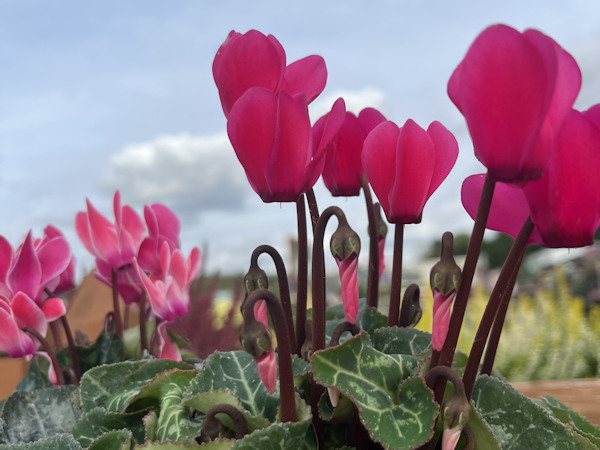Into The Garden - October
September saw us bid farewell to hot summer days, and say hello to a cooler, damper autumn. Now that summer bedding has been and gone, there is space for fresh autumn colour and winter bedding in garden beds and borders. This is the perfect time to get your garden ready for colder temperatures with autumn lawn care supplies!
Don’t forget, you can get ahead with next year’s gardening by planting your spring flowering bulbs now. When spring rolls around, your garden will already be blooming with beautiful fresh colours and give you more time for all the other garden jobs!
Winter Bedding

Even though the temperature outside is getting cooler, the ground is still holding onto the last of the summer warmth. That makes this the perfect time to plant some winter bedding, and fill the gaps left behind from summer plants. This is a fantastic way to keep your garden full of colour.
Now in season are beautiful pansies, violas and cyclamen. Available in a range of boxed and potted sizes, these are arguably one of the most popular varieties of bedding plant for the season. By planting these now, the roots have time to establish themselves into the ground before the soil gets too cold.
If you are looking to fill large areas with a multitude of plants, look for boxed bedding in trays of 6 or 12. This is a cost-effective method of purchasing large quantities of plants and also gives them time to mature throughout the season. If you are not ready to plant them out in the garden yet, you could try planting them on into larger pots and keeping them in a greenhouse or indoors for added warmth.
Shop our range of winter bedding plants online here.

Autumn Lawn Care
Getting your lawn ready for winter is a vital task to ensure your lawn looks its best for the next summer. With a few simple tips and tricks, you can save yourself mountains of time next year looking after your lawn, and you may find it comes back better than before! We recommend products such as:
- Autumn Lawn Feed and Moss Killer
- Lawn Worm Cast Suppressant
- Multi-purpose Lawn Seed
- Lawn Seeding Soil
- Lawn Sand Moss Treatment
- Lawn Fertiliser and Moss Killer
In addition to treating your lawn with maintenance products, it is also essential to mow your lawn while you can. As grass grows more slowly throughout autumn, it will not need to be mown as often as in the summer. It is important the blades stay long to harness energy to stay healthy during winter.
Set your lawn mower to a high cut setting, we recommend 1 ½ to 2 inches, to keep the tops of the grass neat and tidy. To avoid damaging the ground, only cut your grass when the weather is dry and always avoid mowing after any heavy rain or extreme frost.
Shop our range of autumn lawn care products online here.

Spring Flowering Bulbs
Planting spring flowering bulbs during autumn, ready for the following spring, is a fantastic time saving way to really make the most of your garden. It may seem obvious, but buying plants in their bulb form is a cheaper and faster way to fill your garden with spring colour.
Bags of bulbs ready to plant are great money savers as you get more for your money, compared to purchasing the mature version during the season. Not only that, they take less time to plant. Once you have worked out where you want your bulbs to grow, simply make space in the soil and drop them in. This can be far quicker than having to plant a mature version, as you don’t have to compensate for the extra soil and root systems!
Popular varieties of spring flowering bulbs include;
- Allium
- Anemone
- Crocus
- Hyacinth
- Iris
- Narcissi
- Snowdrop
- Tulip
Shop our range of spring flowering bulbs online here.








